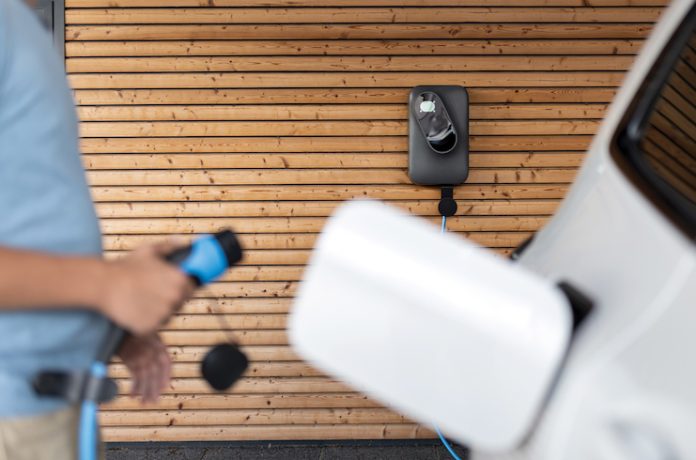
The rising number of electric vehicles on the road is welcome news from an environmental perspective and increases the business opportunity for hoteliers willing to invest in EV charging stations. MarketWatch.com reports that about 1.6 million electric vehicles were sold in the United States in 2023, a 60 percent increase from the one million sold nationwide in 2022. Electric vehicles now represent about 7 percent to 8 percent of new vehicles sold, while a few years ago, that statistic was between 2 percent and 3 percent. Looking ahead to 2030, electric vehicles are expected to comprise about a third of new vehicles sold. That upward trajectory is most pronounced in California, but EV adoption is also strong in states including Florida, Massachusetts, and Illinois and more specific locations such as Washington, D.C. and northeastern New York. Naturally, hotels in those destinations have more motivation to offer EV charging, but as the adoption rate continues to grow, the impetus to install chargers is being felt by hoteliers across the United States and across chain scales.
“Electric vehicles have come down drastically in price to where we’re now seeing the entry-level EV in the $30,000 to $35,000 price point, which makes them more accessible,” observed Randy Etman, senior director of sales, North America, Blink Charging. “And as more electric vehicles are hitting the road, these drivers will want to stay at a variety of properties—not just the high-end luxury properties, but also mid-range or economy properties. And so, as I tell all my hotel clients, it’s not a question of if you need to add charging stations, it’s a question of when and how many, because the EV industry is going to continue to grow.” Etman predicts that EV charging will eventually parallel Wi-Fi in terms of guest expectation.
“The biggest hurdle to adoption is hoteliers’ concern about the timing on the ROI,” said Tony Booth, founder & CEO, Stay-N-Charge. The fee for using the chargers provides additional revenue, which is typically about $12 to $20 a night at a rate of about 50 cents per kilowatt hour. However, the ROI “mainly comes from the added room nights from EV drivers looking to stay at hotels that offer charging, and ideally that revenue increase pays back the initial investment in the chargers within a year or two,” Booth explained.
Tech Considerations
The Level 2 EV charger, with a voltage of 240 and an average charge time (from empty) of three to eight hours, is generally considered the “sweet spot” for hotel charging stations. The initial investment can be reduced with Level 1 chargers, but these are too slow (18-24 hours or more), and of course with free chargers, but these give the supplier control over the stations. That includes setting the charging rates and potentially allowing non-guests to use the stations, which may frustrate EV drivers who booked the hotel in part because of the service, Booth pointed out. Level 3 or direct current fast chargers (480V with an average charge time of 30-60 minutes) are more expensive. “The hotelier could be looking at $5,000 to $6,000 to purchase a single Level 2 station,” noted Etman, “but Level 3 chargers start out at around $15,000 to $20,000 for a low-end DC fast charger, and then you’ll have installation costs on top of that.” Moreover, most hotel guests will not need high-speed charging since they will leave the car to charge overnight, and the Level 2 charging speed fits nicely in that timeframe. As EV usage increases, hoteliers may find ROI in adding one or two Level 3 chargers, but for now, it’s mainly about having more chargers to serve more guests, and the lower price point of Level 2 chargers allows them to do that.
Investing in two chargers is a good starting point for most hotels, Booth recommended. “We can typically pull the power off the building for that, so there is no huge investment into another transformer. But if demand increases and the hotel needs 10 chargers, power from the building will not be sufficient,” he explained. It’s therefore important to first understand the level of EV adoption in the hotel’s area, in case three or four chargers would be more appropriate as an initial investment. Some hoteliers may also want to “make-ready” their power system for more chargers even if they only begin with a few. “Regardless of how many you deploy initially, I advise building out the infrastructure to be able to add more down the road,” said Etman. “Those three or four EV chargers may become 10 or 20 in six or seven short years, and it’s cheaper to enhance the electrical infrastructure in 2024 than it will be in 2030. Wires are not going to be cheaper, conduits are not going to be cheaper, and labor is certainly not going to be cheaper in six to seven years.”
Incentivizing Installation
Part of determining the potential timeline for ROI on EV chargers is researching tax incentive and rebate programs from federal and local governments and utilities, as these can significantly reduce the initial expense. Every state qualifies for the Federal Tax Incentive program, which provides a tax credit of 30 percent of the installation costs. Here are a few examples of local programs:
- New Jersey provides a rebate of $4,000 per charger.
- Oklahoma has a new tax incentive program for 2023 that provides a tax credit of 45 percent of the total cost.
- Delaware has a state-wide program that provides up to $3,500 per plug.
- Georgia Power offers free infrastructure for the installation of EV chargers.
Such incentives empower hoteliers not only to protect the environment by supporting the EV industry, but also meet a growing expectation among drive-in guests and future proof their business in that respect.
Spreading the Word: Promoting a Hotel’s EV Charging Service
Raising awareness among EV drivers of a hotel’s charging service means more potential business from those travelers, and many online channels can help to get the word out. “It would be a shame for [an EV driver] not to stay at a property with a charger because they happen to go on booking.com and search [for properties with that service], and the hotelier hadn’t updated that information on their profile,” said Tony Booth, founder & CEO, Stay-N-Charge, which offers EV charger installation as well as an online directory of hotels with the service that currently includes about three thousand properties. In addition to getting a free listing in the Stay-N-Charge directory, Booth recommends the following promotional measures:
- Update the hotel’s profiles on OTA websites and third-party marketing company directories.
- Get the EV charging service listed on map apps, including the PlugShare EV charging station map, Apple Maps, etc.
- Promote the service on social media channels.
- Promote the service on the hotel website’s amenities section.
Randy Etman, senior director of sales, North America, Blink Charging, added that the hotelier may wish to “do a little pomp and circumstance around [the new service] and hold a ribbon-cutting, maybe inviting some city officials. Many of them love participating in events promoting EV charging in the community.”











